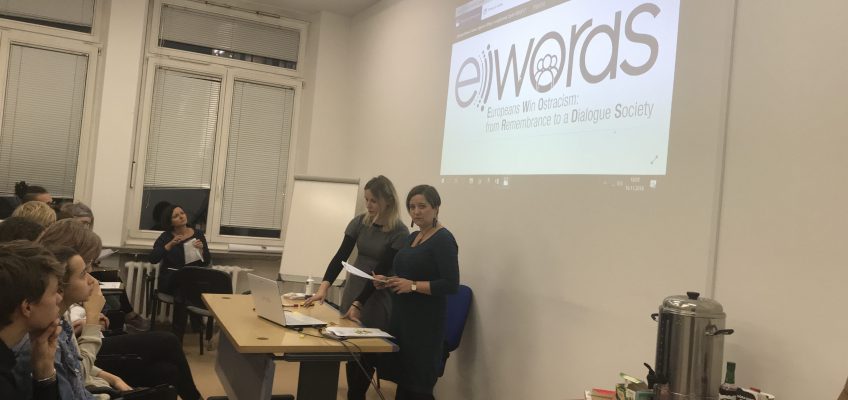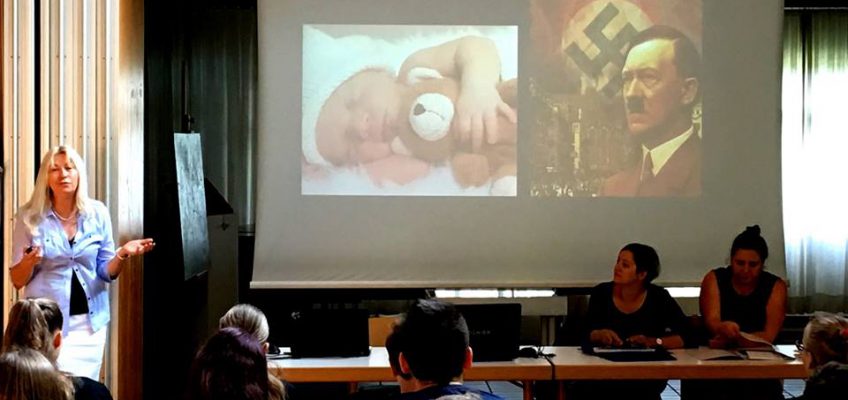Genocide
The term genocide was used for the first time by the Polish Jewish lawyer Raphael Lemkin (1900-1959) at a conference held in Madrid in 1933 and finally coined in his book of 1944 (Axis Rule in Occupied Europe documenting Nazi policies of systematic destruction of national and ethnic groups, including the mass murder of European Jews. Lemkin formed the word by combining geno, from the Greek word for race or tribe, with –cide, from the Latin word for killing. He defined genocide as “a coordinated plan of different actions aiming at the destruction of essential foundations of the life of national groups, with the aim of annihilating the groups themselves, in series of planned actions – not mean the immediate and total destruction”1. In other words, genocide is the killing of a group of people, especially a whole nation, race, or religious group2. The following year, the International Military Tribunal of Nuremberg, in Germany, charged the most prominent members of the political, military, judicial and economic leadership of Nazi Germany with “crimes against humanity.” The word “genocide” was included in the indictment, but as a descriptive – not legal – term. In 1944 was inserted in the US Bill of Rights and in the the 1948 United Nations Universal Declaration of Human Rights, concerning the rights of individuals.3
According to Article II of the 1948 United Nations Convention on the Prevention and Punishment of the Crime of Genocide (Genocide Convention), genocide consists of any of the following acts committed with intent to destroy, in whole or in part, a national, ethnical, racial or religious group, such as:
-
Killing members of the group;
-
Causing serious bodily or mental harm to members of the group;
-
Deliberately inflicting on the group conditions of life calculated to bring about its physical destruction in whole or in part;
-
Imposing measures intended to prevent births within the group;
-
Forcibly transferring children of the group to another group.
Article III lists five punishable acts related to the crime of genocide: genocide; conspiracy to commit g.; direct and public incitement to commit g.; attempt to commit g. and complicity in g.4. Genocide is defined in the same terms as in the Genocide Convention in the Rome Statute of the International Criminal Court (Article 6), as well as in the statutes of other international and hybrid jurisdictions. Many States have also criminalized genocide in their domestic law; others have yet to do so.
The element of intent is the most difficult to determine. In order for there to be genocide, there must be a proven intent on the part of the perpetrators to physically destroy a national, ethnical, racial or religious group. Cultural destruction does not suffice, nor does an intention to simply disperse a group. It is this special intent, or dolus specialis, that makes the crime of genocide unique. Furthermore, case law has associated intent with the existence of a State or organizational plan or policy, even if the definition of genocide in international law does not include that element.
Importantly, the victims of genocide are deliberately – and not randomly – targeted because of their real or perceived membership to one of the four groups protected under the Genocide Convention (which excludes political groups, for example). This means that the target must be the group as such, and not its members as individuals. Genocide can also be committed against a part of the group only, as long as that part is identifiable (including within a geographically limited area) and “substantial.”5
Concentration Camps
By “concentration camps” are meant camps in which people are imprisoned with no regard whatsoever to any provision on arrest or detention. Although the term is commonly used to refer to Nazi camps, not all the camps created by Nazis were designated as concentration camps.
Used at the beginning of the twentieth century as prisons of war to recruit soldiers or civilians from enemy countries, concentration camps were then used by totalitarian regimes during the II World War to lock up those who, for racial or political reasons, were considered enemies to be eliminated. Their first use was to incarcerate internal political adversaries from the left and liberal circles, as well as members of the proscribed German labor movement organizations. In this version, the concentration camps have become labor camps, where the inhumanity of the treatment often led to death, or extermination camps, where the systematic killing of prisoners was carried out.
The first use of concentration camps to capture civilians dates back to the Anglo-Boer War of 1900-02, when the British took over the families of the guerrillas in order to tame the resistance. The example was followed, during the First World War, by Germany and other states, in order to control the suspicious civilian population. Even the United States, after the Japanese attack on Pearl Harbor, imprisoned the Japanese residing on the American territory in special camps.
The use of concentration camps by left and right totalitarian regimes has been quite different over the course of the century. They used the concentration camps to imprison all the ‘enemies’ of the regime and systematically eliminate them, through forced labor or resorting to mass killings. The most famous examples of labor camps and extermination camps are the Nazi concentration camps and the Soviet gulags, where millions of people died, but also other totalitarian regimes – such as the China of Mao Zedong, the Cambodia of Pol Pot and the Chile of Augusto Pinochet – have had their concentration system.
The Nazis used the Lager (which in German means “fields”) as soon as they came to power. Before the outbreak of the II World War, there were already about fifty concentration camps – including Dachau and Buchenwald – which housed tens of thousands of people, including political opponents and individuals considered asocial (homosexuals, drug addicts, alcoholics, criminals, handicapped people, mental patients).
Since the beginning of the war, the Lager became the main instrument for the internment of the Jews. New ones were built, some of which (Auschwitz, Mauthausen, Treblinka) would have become tragically known. The Jews who were imprisoned in them were subjected to forced labor and unimaginable cruelty, including pseudoscientific experiments. When the regime took the decision to eliminate all Jews (the ‘final solution’), the Lager became real ‘factories of death’, whose task was to organize in the most efficient way the killing and disappearance of millions of men, women and children. People were killed in the gas chambers and afterwards their bodies were burnt in crematory ovens. Six millions Jews died in concentration camps.
The II World War preparations and the war itself led to an expansion of the camps system. The implementation by the SS chief Heinrich Himmler of the “Four-year plan” – whose objective was to prepare the army and the economy of war – led to an exploitation of the prisoners of concentration camps for military and civil construction projects, and to reinforce its own standing. The SS also set up their own factories for this purpose. With the intensification of the war from 1942 to 1945, prisoners were systematically drafted for working in the armaments industry. In the meantime, in 1942 Auschwitz and Majdanek camps became pivotal centres for this evil purpose: Nazis oversaw the installation of gas chambers there, and most of the Jews deported to these camps were killed on arrival, especially children, women, the old and the weak. Entire communities of Jews were brought to Auschwitz, coming from Netherlands and Slovakia (1942), Greece (1943), Hungary, Poland, Germany, France, Italy and other countries (1944).
The living conditions in the Nazi concentration camps were appalling, especially in the second part of the war, when mortality rate rose as a result of maltreatment, undernourishment and overcrowding in the barracks. Most of the victims were Poles, Russians and Jews.
1 Prevent genocide, Anonymous, 2016, http://www.preventgenocide.org/genocide/officialtext-printerfriendly.htm
2 Meaning of “genocide” in the English Dictionary- from the Cambridge Advanced Learner’s Dictionary & Thesaurus © Cambridge University Press, 2013
3 The term “genocide”, United States Holocaust Memorial Museum, Washington, DC
4 Prevent genocide, Anonymous, 2016, http://www.preventgenocide.org/genocide/officialtext-printerfriendly.htm
5 United Nations Office on Genocide prevention and the responsibility to protect, http://www.un.org/en/genocideprevention/genocide.html
Genocide and Concentration Camps: selected readings
A selection of events:
Theatrical Labs: Grosseto Autunm-Winter Camps









